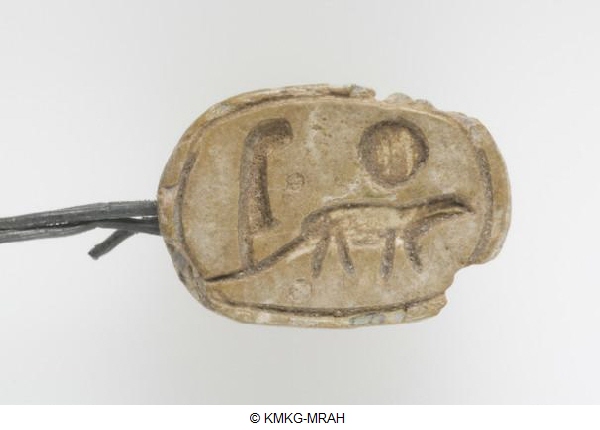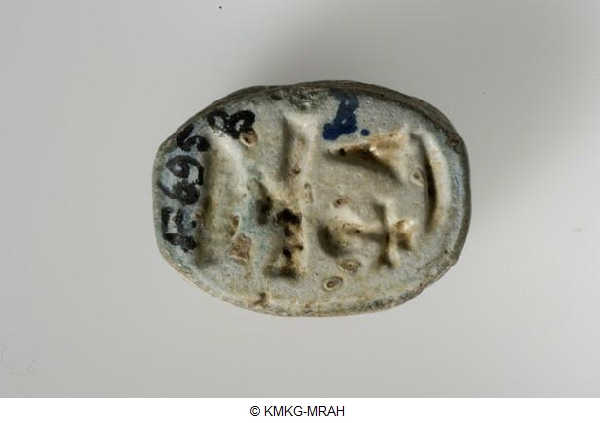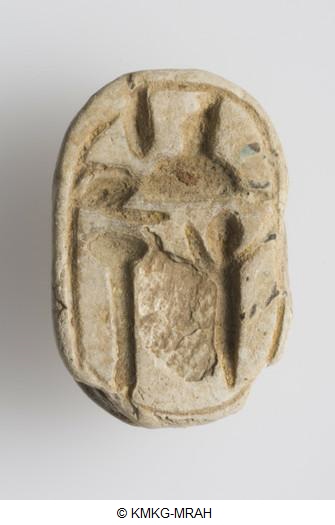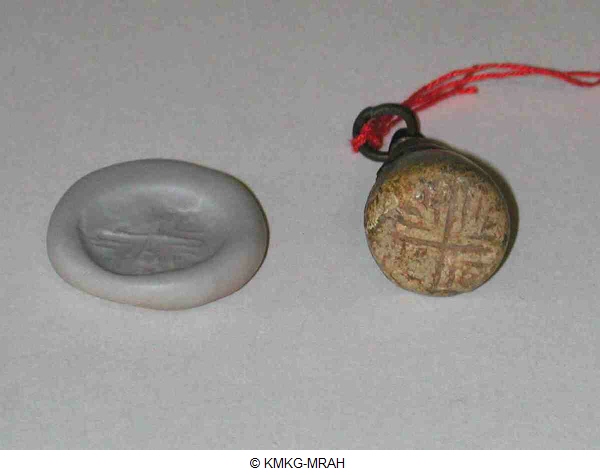might
↑ objectName, objectTitle:
objectTitle :
collectionName : collectionNameinventoryNb : inventoryNb
objectName : objectName
objectTitle : objectTitle
objectCulture : objectCulture
geography : geography
dating : dating
material : material
technique : technique
dimensions : dimensions
legalRightOwner : legalRightOwner
objectDescription : objectDescription

↑ , Scarab:
Scarab :
collectionName : EgyptinventoryNb : E.06642
objectName :
objectTitle : Scarab
objectCulture : Egyptian
geography :
dating : 747 BC - 656 BC
material :
technique :
dimensions : Height: 1,1 cm, Width: 0,7 cm, Depth: 0,5 cm
legalRightOwner : Musées royaux d'art et d'histoire/Koninklijke Musea voor Kunst en Geschiedenis
objectDescription : The base of this scarab shows an ostrich feather of the goddess Maat and a mongoose (ichneumon) below a solar disk. The interpretation of this composition remains unclear (it might refer to the god Amon) but it is popular on scarabs from the 25th dynasty.

↑ , Scarab:
Scarab :
collectionName : EgyptinventoryNb : E.06958b
objectName :
objectTitle : Scarab
objectCulture : Egyptian
geography :
dating :
material :
technique :
dimensions : Height: 2,7 cm, Width: 2 cm, Depth: 1,3 cm
legalRightOwner : Musées royaux d'art et d'histoire/Koninklijke Musea voor Kunst en Geschiedenis
objectDescription : The base of this scarab shows hieroglyphs (“nb”, “Htp”, “di” and “ankh” or “swt” (?)) combined in an unconventional way. The inscription might refer to the sacrificial formula “Htp di nsw”, ‘a sacrifice which the king gives’.

↑ , Scarab:
Scarab :
collectionName : EgyptinventoryNb : E.07950c
objectName :
objectTitle : Scarab
objectCulture : Egyptian
geography :
dating : 1186 BC - 715 BC
material :
technique :
dimensions : Height: 1,8 cm, Width: 1,2 cm, Depth: 0,8 cm
legalRightOwner : Musées royaux d'art et d'histoire/Koninklijke Musea voor Kunst en Geschiedenis
objectDescription : The back of this scarab shows a small scarab, a type characteristic for the Ramessid Period. The inscription on the base, with the sphinx, the papyrus “wAdj” and the lotus stalk, is, however, attested on scarabs from the 22nd dynasty. It might mean: “Hs nb tAwy”, ‘praise to the lord of the Two Lands’.

↑ , Stamp seal with cross:
Stamp seal with cross :
collectionName : Near EastinventoryNb : O.04861
objectName :
objectTitle : Stamp seal with cross
objectCulture : Culture unknown
geography :
dating :
material :
technique :
dimensions : Height: 1,9 cm, Width: 4,2 cm
legalRightOwner : Musées royaux d'art et d'histoire/Koninklijke Musea voor Kunst en Geschiedenis
objectDescription : A conic shaped amulet. The base shows a cross and triangular motifs. The entire motif might be derived from a stylised rosette.

